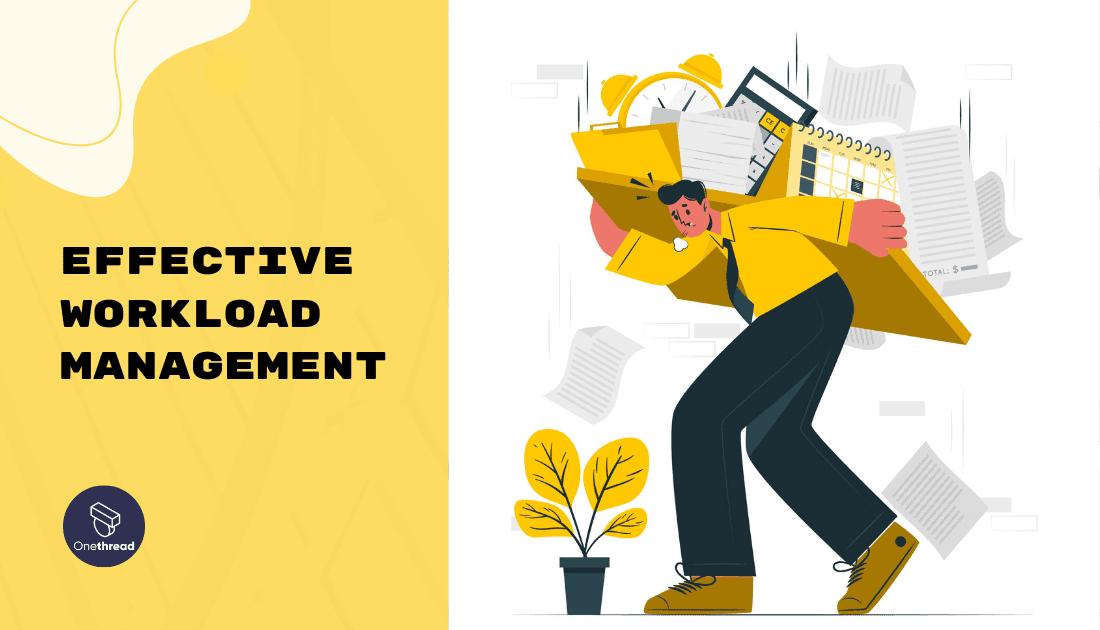Workload management plays a crucial role in achieving success and maintaining a healthy work-life balance in today’s fast-paced and demanding work environments.
By understanding and implementing effective workload governance strategies, individuals, teams, and organizations can optimize their productivity, reduce stress, and enhance overall work quality.
In this inclusive guide, we will explore the definition of workload management, its importance, and practical strategies for managing workloads efficiently.
Whether you’re an individual seeking better time management or a team leader looking to improve team efficiency, this article will provide valuable insights and actionable tips to help you achieve your goals.
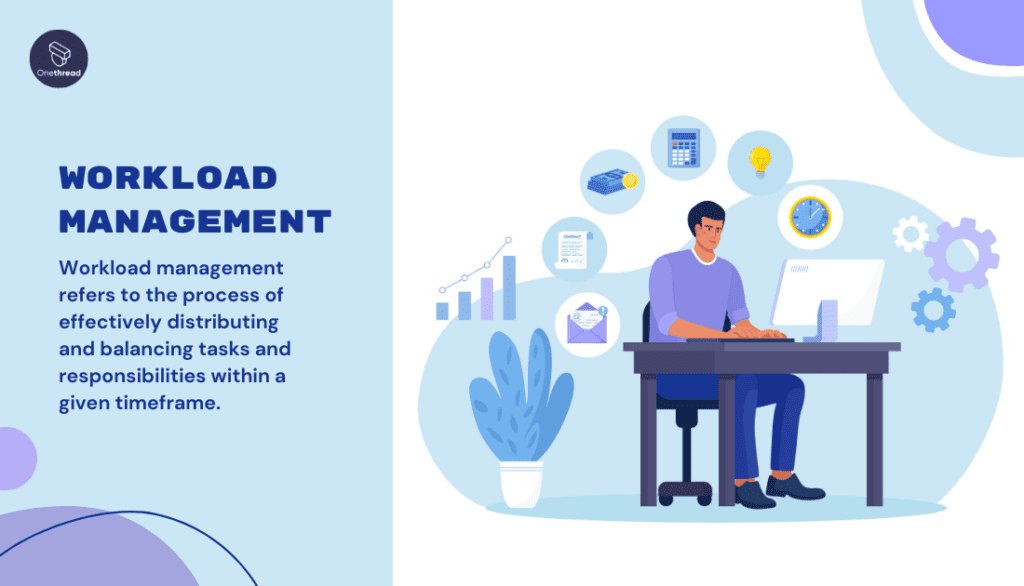
What is Workload Management?
Workload management refers to the process of effectively distributing and balancing tasks and responsibilities within a given timeframe.
It involves planning, prioritizing, and organizing workloads to ensure that resources, including time and personnel, are optimally utilized.
By implementing workload administration techniques, individuals and teams can avoid overwhelm, meet deadlines, and achieve desired outcomes.
Common Challenges of Workload Management and Solutions
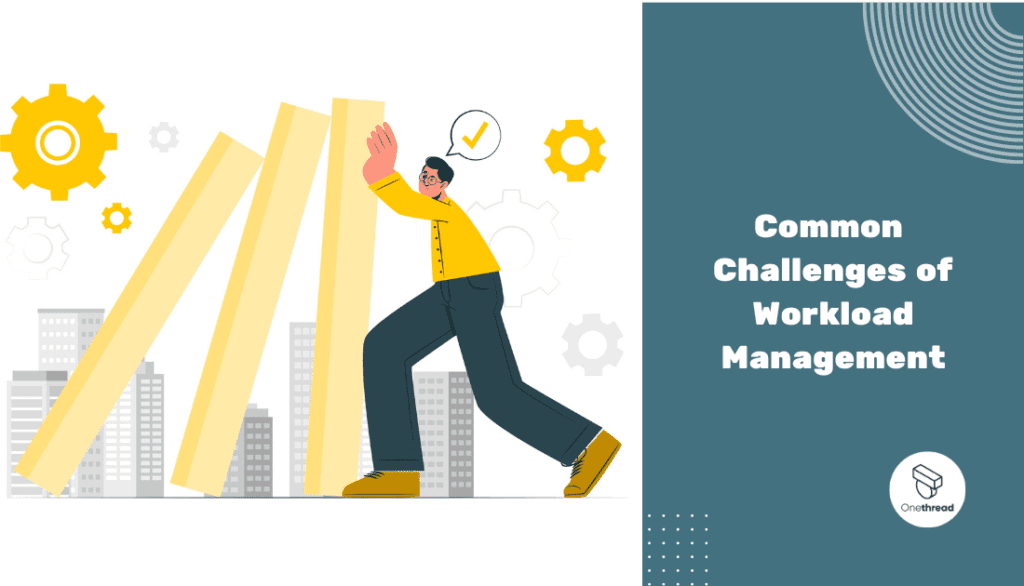
While workload administration brings numerous benefits, it also poses certain challenges. Some common challenges include:
- Unrealistic Expectations and Deadlines: Setting unrealistic expectations and tight deadlines can lead to stress and subpar work quality. It’s crucial to manage expectations and negotiate realistic deadlines with stakeholders.
- Uneven Workload Distribution: Unequal distribution of work within a team can cause frustration, demotivation, and burnout. Team leaders should ensure a fair distribution of tasks based on individual strengths and workloads.
- Limited Resources and Under-Resourcing: Insufficient resources, such as staffing, tools, or budget, can hinder workload management. Effective resource allocation and planning can mitigate this challenge.
- Lack of Clear Communication: Poor communication can lead to misunderstandings, duplications, and inefficiencies. Clear and open communication channels should be established to ensure smooth workflow and task clarity.
- Changing Priorities and Unexpected Workload Surges: Work environments often experience shifting priorities and sudden surges in workload. Flexibility, adaptability, and effective prioritization techniques are key to managing such situations.
- Multitasking and Distractions: Multitasking can decrease productivity and increase errors. Minimizing distractions, implementing time-blocking techniques, and focusing on one task at a time can mitigate these challenges.
- Insufficient Work-Life Balance: Imbalanced workloads can significantly impact personal well-being and work-life balance. Establishing boundaries, prioritizing self-care, and promoting a healthy work culture can help achieve a better work-life balance.
Benefits of Effective Workload Management
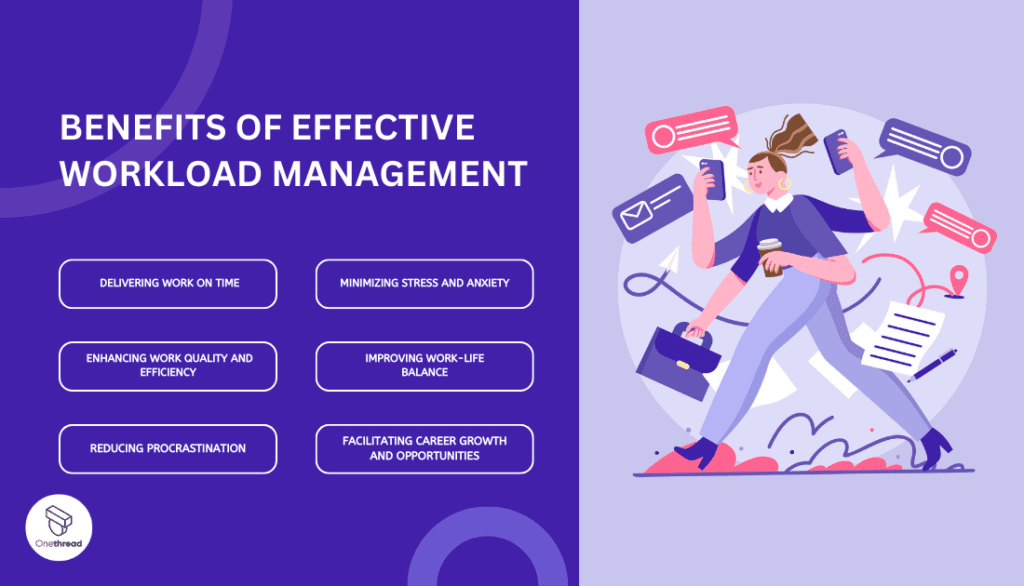
There are so many advantages of effective and result-oriented workload management. Most significant are,
1. Delivering Work on Time: Meeting deadlines is crucial for individual and organizational success. Effective workload managing enables individuals and teams to prioritize tasks, allocate resources efficiently, and ensure the timely completion of projects.
2. Enhancing Work Quality and Efficiency: Balanced workloads allow individuals to allocate sufficient time and energy to each task, resulting in improved work quality. By focusing on essential tasks and eliminating unnecessary distractions, productivity and efficiency are enhanced.
3. Reducing Procrastination: Procrastination can hinder productivity and lead to stress. Through effective workload management, individuals can break tasks into manageable chunks, set realistic deadlines, and employ time management techniques to overcome procrastination tendencies.
4. Minimizing Stress and Anxiety: High workloads and overwhelming tasks can cause stress and anxiety. Individuals can reduce stress levels and maintain a healthier work-life balance by implementing workload overseeing strategies, such as proper planning, prioritization, and time tracking.
5. Improving Work-Life Balance: Balancing work demands with personal life is crucial for overall well-being. Effective workload managing ensures that individuals have adequate time for personal activities, hobbies, and relaxation, leading to improved work-life balance.
6. Facilitating Career Growth and Opportunities: Proper workload administration allows individuals to focus on professional development, seize growth opportunities, and showcase their skills. It also helps identify areas where additional resources or training may be required for career advancement.
Key Principles of Workload Management
Your workload can be managed effectively only if the several components of your workload can be managed in the right way. We have to find the root cause and then figure out a solution. There are several aspects of workload management and let’s look at the ways to optimize each of them:
Time Management Techniques for Effective Workload Management
Managing workload effectively requires a strategic approach to time management. By prioritizing tasks, planning ahead, and utilizing tools and techniques, you can make the most out of your working hours. Here’s an overview of time management techniques that can contribute to more efficient workload management.
1. Prioritization
The Eisenhower Matrix: Categorize tasks into four quadrants based on urgency and importance to decide what you need to do first, schedule, delegate, or eliminate.
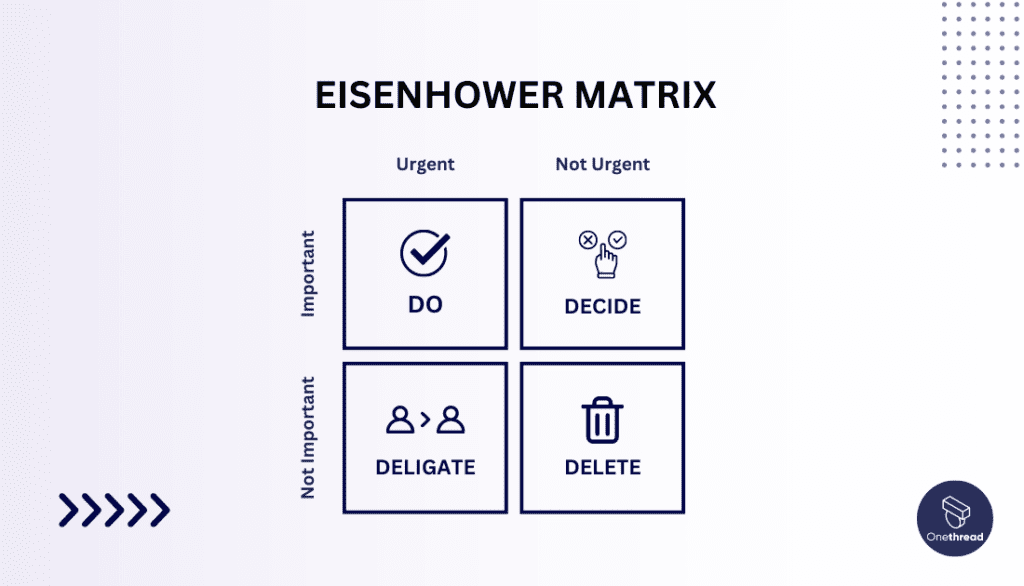
Benefit: Helps in focusing on what really matters and minimizes time spent on non-essential tasks.
2. Planning and Scheduling
Time Blocking: Allocate specific blocks of time for different tasks or groups of tasks.
Daily/Weekly Planning: Outline your tasks and goals for the day or week to have a clear roadmap.
Benefit: Keeps you on track and ensures that you allocate sufficient time for each task.
3. Use of Technology
Project Management Tools: Utilize tools like Asana, Trello, or Jira to organize and track tasks.
Time Tracking Tools: Monitor how much time is spent on various tasks to analyze efficiency.
Benefit: Automation and insights from these tools can lead to more precise planning and execution.
4. The Pomodoro Technique
Description: Work in focused intervals (usually 25 minutes), separated by short breaks.
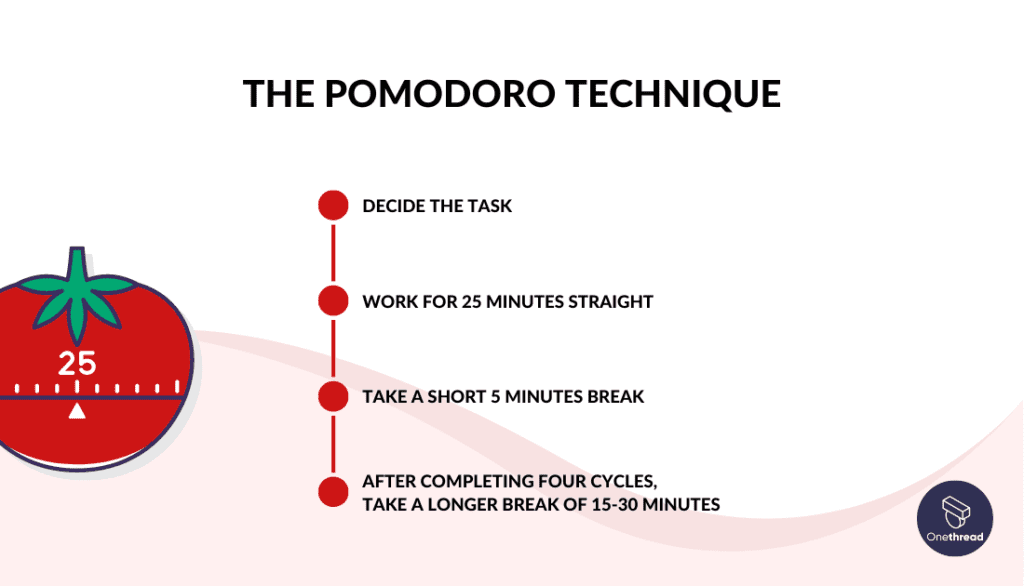
Benefit: Enhances concentration and keeps you energized by incorporating regular rest periods.
5. Avoiding Multitasking
Focus on Single Tasking: Concentrate on one task at a time to ensure better quality and efficiency.
Benefit: Reduces errors and enhances focus, allowing you to complete tasks more quickly.
6. Setting SMART Goals
Description: Goals should be Specific, Measurable, Achievable, Relevant, and Time-bound. Incorporate regular breaks and mindfulness practices into your routine.
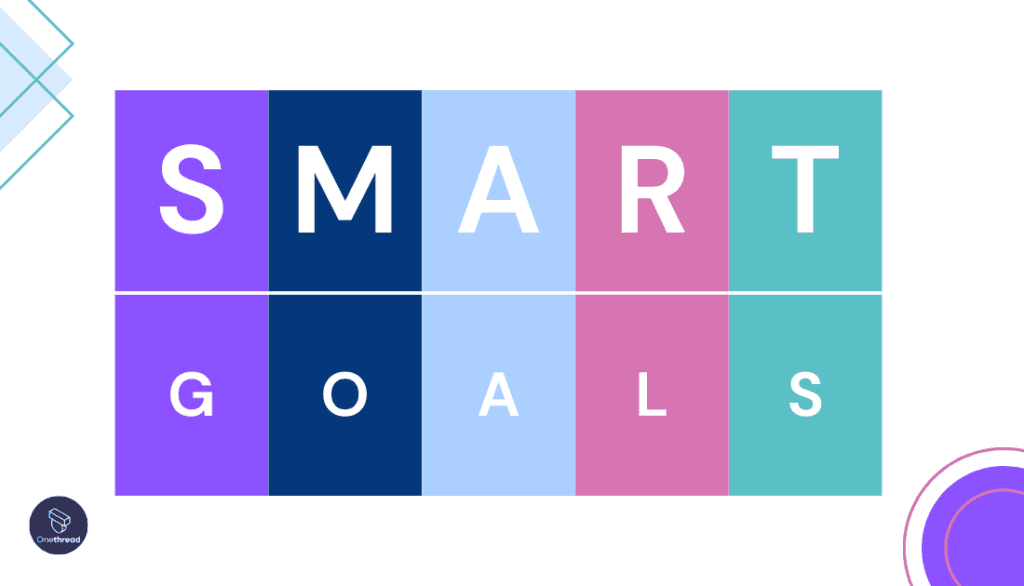
Benefit: Provides clarity and direction, making planning and executing tasks easier. Helps maintain mental clarity and energy, improving overall productivity.
Effective Task and Project Management
The bigger your workload, the more is the need to prioritize and manage your tasks. To do that effectively, we need to take care of the following steps:
- Breaking Down Projects into Manageable Tasks: Breaking down projects into smaller, manageable tasks helps better understand and plan. Utilizing project management methodologies like Agile or creating task hierarchies using task management tools allows for clearer task assignment and tracking.
- Setting Realistic Deadlines and Milestones: Realistic deadlines ensure that tasks are completed on time without compromising quality. Establishing milestones within projects helps monitor progress and ensure the timely completion of key deliverables.
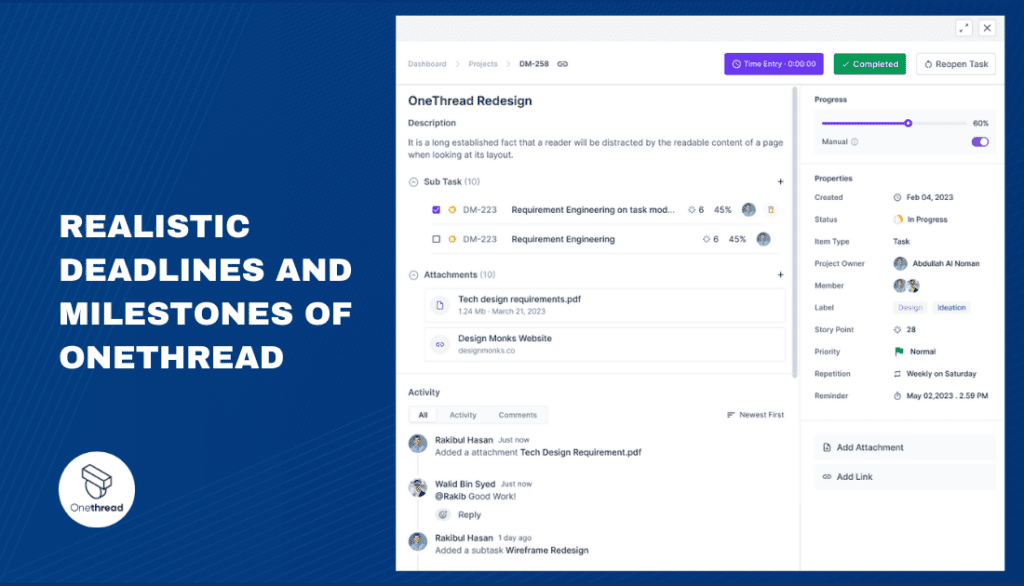
- Utilizing Task Templates and Standardized Workflows: Creating task templates and standardized workflows streamlines task execution.
Templates act as guides, ensuring consistency and efficiency when performing repetitive or similar tasks. Standardized workflows establish clear procedures, reducing ambiguity and improving overall productivity.
Effective Resource Management and Allocation
No matter how hard you work, if you have not allocated and managed your resources properly, you will not be able to manage your workload properly. Some of today’s workload will always be pushed towards tomorrow’s to-do list because one (or multiple) of your resources have not been available on time.
So here’s a few ways to ensure you get all your required resources when in need:
- Assessing Available Resources: Understanding the available resources, including personnel, budget, and tools, is crucial for workload management. Conducting resource audits and capacity assessments helps identify potential gaps or limitations.
- Resource Calendar and Capacity Planning: Maintaining a resource calendar helps visualize resource availability and allocation. Capacity planning involves matching tasks with available resources, ensuring a balanced distribution of workload, and preventing resource overload.
- Distributing Workload Equitably and Fairly: Uneven distribution of workload can lead to dissatisfaction and burnout. Consider team members’ skills, strengths, and current workloads when assigning tasks, ensuring a fair and equitable distribution.
Minimizing Multitasking and Distractions
Multitasking can decrease productivity and increase errors. Most of us thing that we can multitask, but in reality the people who can actually do that are only 2% of the entire population. So, it’s safe to assume that most of us do not belong there.
Minimizing distractions and adopting strategies such as time blocking, batching similar tasks together, and creating dedicated workspaces help individuals focus on one task at a time, resulting in improved efficiency.
Setting Boundaries and Achieving Work-Life Balance
Establishing boundaries between work and personal life is essential for maintaining a healthy work-life balance. Setting clear expectations, managing working hours, and prioritizing self-care promote well-being and prevent work-related burnout.
Effective Communication and Collaboration
If you have incorporated all of the above steps and your workload does not seem manageable, then you might be going wrong with your communication. Here are a few tips to take care of it:
- Regular Check-Ins with Team Members: Frequent check-ins provide an opportunity to discuss progress, address challenges, and provide support. Regular communication ensures everyone is on the same page and allows for adjustments to workload distribution if needed.
- Feedback and Performance Evaluation: Providing constructive feedback and conducting regular performance evaluations help individuals and teams identify areas of improvement, optimize workload governance strategies, and enhance overall effectiveness.
Workload Management for Teams and Organizations
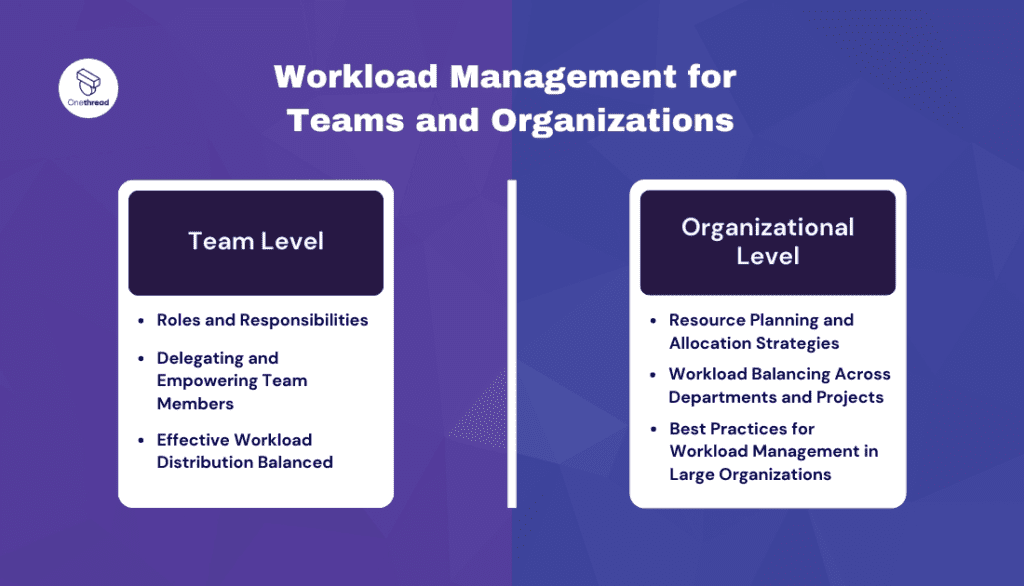
Workload Management at the Team Level
- Roles and Responsibilities: Clearly defined roles and responsibilities within a team minimize confusion and ensure efficient task allocation. Clearly outlining expectations and establishing team norms promote accountability and collaboration.
- Delegating and Empowering Team Members: Delegation allows leaders to distribute workload and empower team members. Leaders can enhance team efficiency and foster professional growth by leveraging individual strengths and providing autonomy.
- Effective Workload Distribution Balanced: workload distribution prevents individual and team burnout. Team leaders should consider the skills, experience, and availability of team members when assigning tasks to ensure equitable distribution.
Workload Management at the Organizational Level
- Resource Planning and Allocation Strategies: Organizations should engage in strategic resource planning, ensuring that adequate resources are available to support workload demands. This involves forecasting resource needs, budgeting appropriately, and aligning resources with organizational goals.
- Workload Balancing Across Departments and Projects: Balancing workloads across departments and projects helps avoid bottlenecks, improve resource utilization, and foster cross-functional collaboration. Coordination and communication among teams facilitate effective workload governance at the organizational level.
- : Large organizations face unique challenges in workload plan. Implementing centralized project management systems, establishing cross-functional teams, and providing ongoing training and support are crucial for achieving effective workload administration across the organization.
Overcoming Workload Challenges
- Setting Realistic Expectations and Deadlines: Setting realistic expectations and negotiating feasible deadlines with stakeholders is key to avoiding undue stress and maintaining work quality. Clear communication, managing priorities, and setting boundaries help address this challenge.
- Creating a Healthy Work Culture: Promoting a healthy work culture is vital for effective workload management. Organizations should encourage work-life balance, provide support systems, foster open communication, and prioritize employee well-being.
- Proper Workload Distribution and Resource Management: Addressing workload imbalances and under-resourcing requires regular assessment, open dialogue, and proactive resource planning. Organizations should strive for fair distribution of tasks and provide adequate resources to support workload demands.
- Addressing Unexpected Workload Surges and Urgent Tasks: Adapting to unexpected workload surges and urgent tasks requires flexibility and prioritization. Effective communication, resource reallocation, and contingency planning enable teams to respond efficiently to unforeseen demands.
- Developing Effective Workload Management Policies and Procedures: Establishing clear policies and procedures for workload administration ensures consistency and fairness. This includes defining workload expectations, providing guidelines for task allocation, and implementing performance measurement systems.
How Onethread Can Help You in Workload Management
Onethread can be an excellent solution for workload management thanks to its robust features and user-friendly interface. Here’s how it can help you:
- Task Organization: Onethread allows you to organize tasks efficiently, enabling you to prioritize and focus on essential activities.
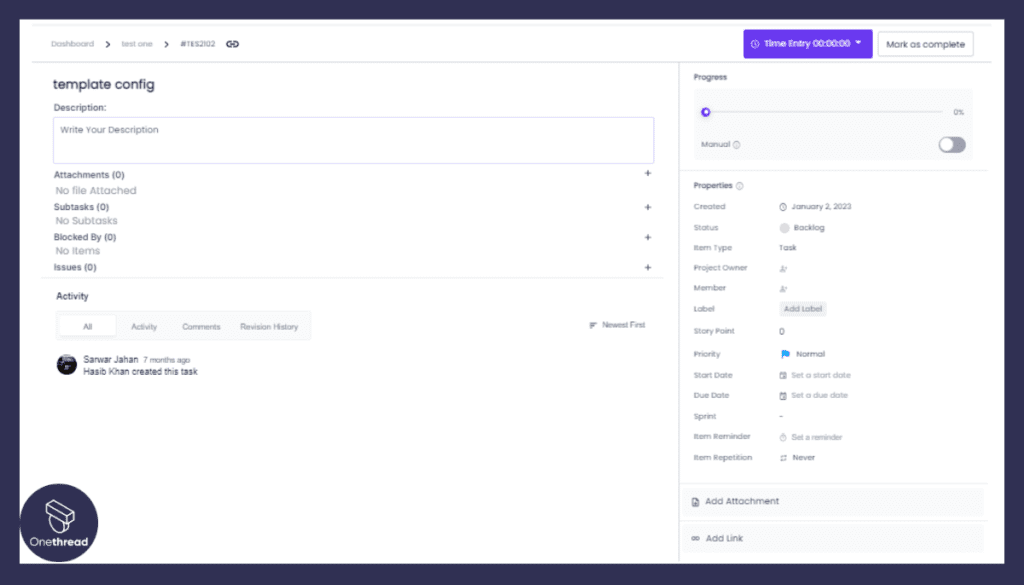
- Collaboration: With real-time collaboration, you can work seamlessly with your team, assign tasks, and track progress.
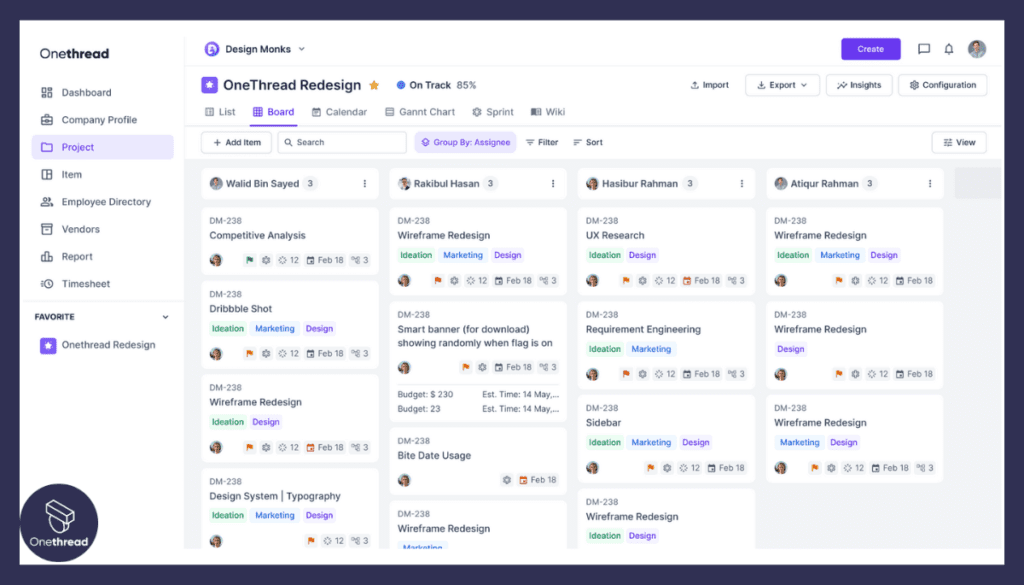
- Gantt Charting: The Gantt chart feature provides a visual representation of project timelines, helping you manage deadlines effectively.
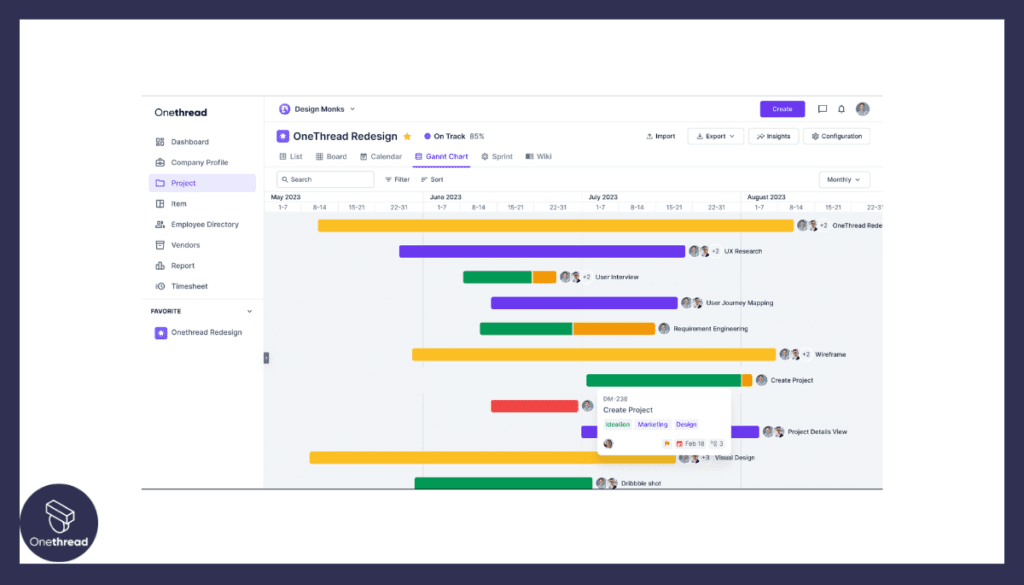
- Customization: Onethread offers customizable features, tailoring the platform to your specific workflow needs.
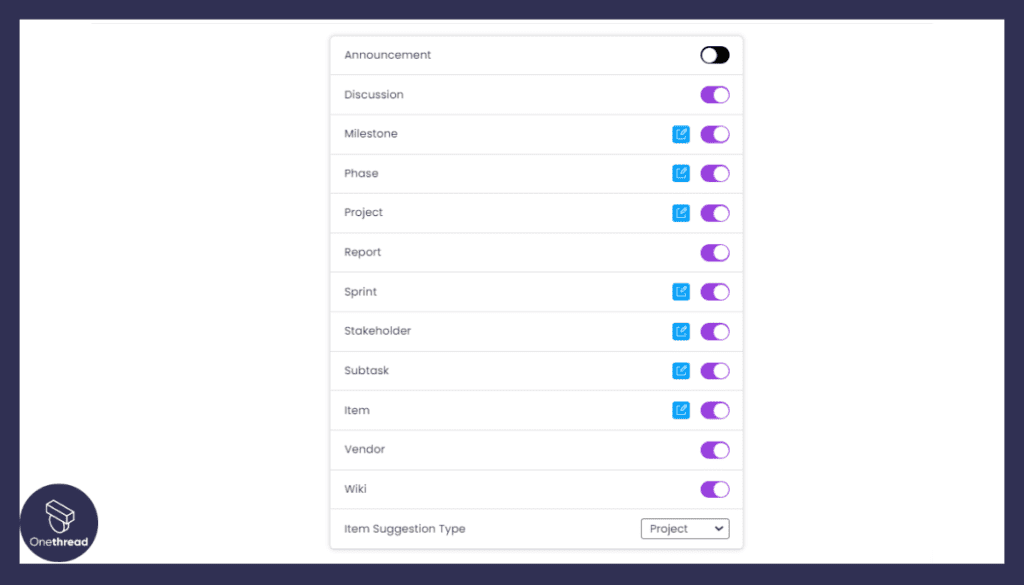
- Centralized Database: All your project data is stored in one place, making it easy to access and manage information.
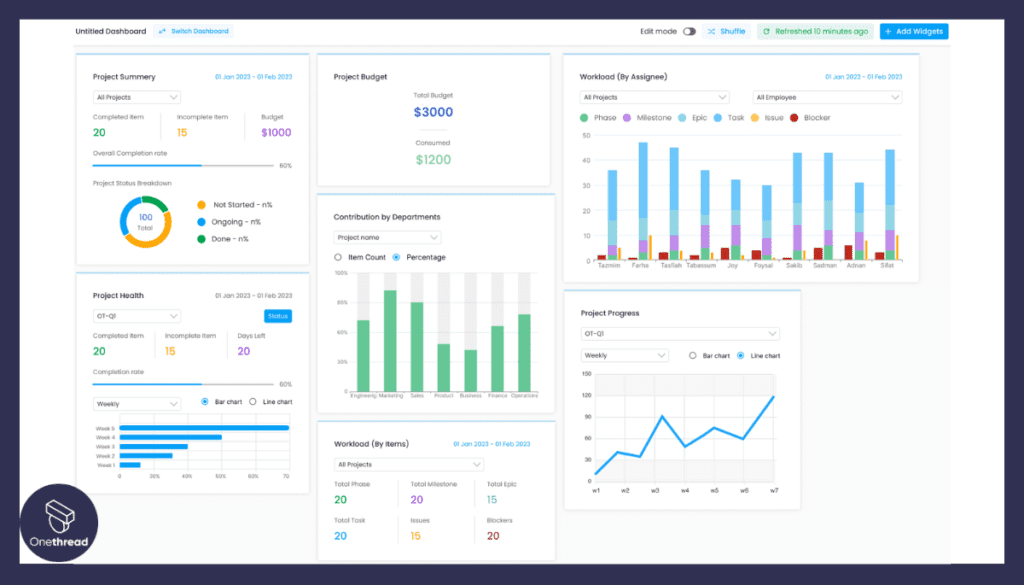
- Integrations: Onethread integrates with various tools, allowing you to connect with other productivity apps and streamline your work.
By utilizing Onethread, you can enhance your workload management process and achieve better efficiency in your projects.
Conclusion
Workload administration is not a one-size-fits-all approach. It requires a combination of time management techniques, effective task and project management, resource allocation, and open communication.
By implementing the principles and strategies outlined in this guide, individuals and organizations can create a culture of efficient workload management that fosters productivity, well-being, and growth.
Whether you are an individual seeking better time management or a team leader responsible for workload distribution, proactive implementation of workload governance strategies can significantly improve productivity, work quality, and overall well-being.
Remember, Onethread, a comprehensive workload administration software, can provide valuable assistance in streamlining and optimizing your workload managing processes.
With features such as task tracking, resource allocation, and collaboration tools, Onethread empowers individuals and teams to work smarter and achieve better outcomes.
Take control of your workload and unlock your full potential. Start implementing effective workload management strategies today with Onethread. Visit [https://www.onethreadapp.com/] to learn more and start your journey towards optimized productivity and work-life balance.
FAQs
Q: Why is workload management important?
A: A workload plan is crucial because it allows you to maintain control over your tasks and stay organized.
By effectively balancing your workload, you can ensure that you’re able to meet deadlines, deliver quality work, and avoid burnout. It helps prevent feeling overwhelmed and promotes a healthier work-life balance.
Q: How can I prioritize my tasks effectively?
A: Prioritization is key when it comes to workload plans. Start by identifying urgent tasks that have strict deadlines or high importance.
Next, consider each task’s impact on your overall goals or objectives. Breaking down larger projects into smaller actionable steps can also make them more manageable. Utilize workload management tools like to-do lists or project management software to help keep track of priorities.
Q: What strategies can I use for better time management?
A: Time management plays a significant role in workload balance. One effective strategy is the Pomodoro Technique, where you break your work into focused intervals with short breaks in between.
This approach helps improve focus and productivity while preventing burnout. Additionally, avoiding multitasking and setting realistic deadlines are essential for managing time effectively.
Q: How do I handle an overwhelming workload?
A: When faced with an overwhelming workload, it’s important not to panic but to take a step back and objectively assess the situation. Break down tasks into smaller chunks, delegate responsibilities if possible, and ask for help when needed.
Remember to prioritize self-care as well – taking breaks and practicing stress-relieving activities can help alleviate some of that overwhelm.
